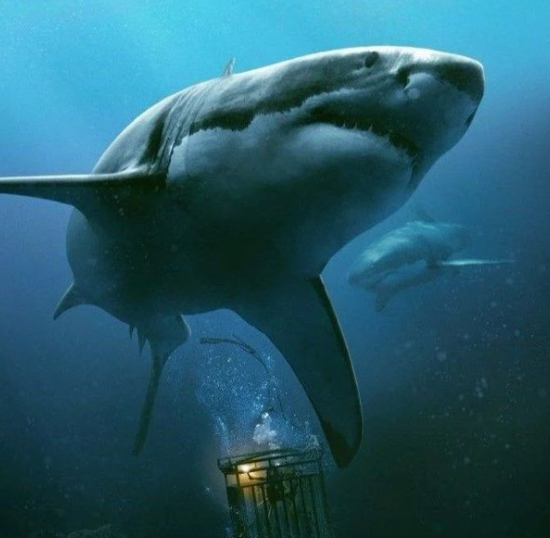“There is grandeur in the great white shark’s sheer size and power, but also in its role as a keystone species that maintains the balance of marine life.” – David Attenborough
Great white sharks split into three distinct groups between 100,000 and 200,000 years ago and have rarely interbred since, according to a new study. These findings suggest that if one of these populations goes extinct, it cannot be replaced by others.
—Scientists found three distinct great-white-shark populations that congregate in different oceans and do not interbreed: Their separation may have implications for their conservation… 🤗https://t.co/AvYIaDGF7n pic.twitter.com/N85TRwnYDB
— Gill Raker (@BranXpina) August 8, 2024
The study, published on July 23 in Current Biology, involved scientists sequencing the genomes of 89 great white sharks (Carcharodon carcharias) from around the world. Their analysis revealed three distinct groups that diverged over time and did not interbreed. These groups are located in the North Atlantic/Mediterranean, Indo-Pacific, and North Pacific oceans.
Co-author Leslie Noble, a molecular evolutionary ecologist at Nord University in Norway, explained that these findings highlight the vulnerability of each group. “If you wipe out sharks in a particular area, they’re not going to be repopulated by sharks from another lineage,” Noble said. This means that the global population of white sharks has been reduced to three very distinct units, which is concerning for their conservation.
The study also found that female sharks, like salmon, return to their birthplace to give birth. This behavior ensures that the mitochondrial DNA, inherited only from their mothers, accurately reflects their place of origin. While previous studies have examined the mitochondrial genome of white sharks to study genetic diversity, these earlier efforts were less reliable due to mutations in the DNA. In this new study, Noble and his team analyzed hundreds of thousands of genetic markers, focusing on single nucleotide variations, to better trace the lineage of these sharks.
The researchers then grouped related genetic sequences using a statistical algorithm, revealing the three distinct populations. They traced the history of these sharks by determining when the genetic makeup of a common ancestor began to diverge. This analysis indicated that the shark lineages split during the Penultimate Glaciation Period, an ice age that caused sea levels to drop significantly.
It remains unclear why these populations originally split, but Noble suspects that the drop in sea level, along with changes in ocean currents and temperature, may have created biogeographical barriers. “We don’t find genes moving across those [geographical] boundaries,” Noble noted, suggesting that each lineage may have adapted to its specific environment.
Interestingly, the only evidence of interbreeding was found in a hybrid shark, a mix of the Indo-Pacific and North Pacific lineages, discovered in the Bermuda Triangle. Noble speculates that other instances of interbreeding might have occurred, but the offspring may have been lost through natural selection.
The International Union for Conservation of Nature (IUCN) considers the great white shark vulnerable to extinction, with about a third of the population lost between 1970 and 2018. However, global protection efforts have slowly helped their numbers increase.
For Noble, the existence of three distinct lineages means that conservation efforts should focus on preserving each group separately. If these populations start interbreeding, the resulting offspring might not survive. The loss of these apex predators could also have significant consequences for humans, as great white sharks play a crucial role in maintaining healthy marine ecosystems. “If we lose the great whites, we might lose a lot of our protein from these ecosystems,” Noble warned.
Major Points:
- Great white sharks split into three distinct populations 100,000 to 200,000 years ago, found in the North Atlantic/Mediterranean, Indo-Pacific, and North Pacific oceans.
- These shark populations have rarely interbred since their divergence, making each group genetically unique and irreplaceable if one goes extinct.
- The study suggests that conservation efforts should focus on preserving each population separately to prevent interbreeding and potential loss of genetic diversity.
- The split likely occurred due to changes in sea levels, ocean currents, and temperatures during the Penultimate Glaciation Period, creating barriers that isolated these populations.
- The decline or extinction of great white sharks could severely impact marine ecosystems and human food sources, as these apex predators play a vital role in maintaining ocean health.
- “The great white shark is a testament to the raw, untamed power of nature—a symbol of both beauty and danger.” – Peter Benchley
Susan Guglielmo – Reprinted with permission of Whatfinger News



